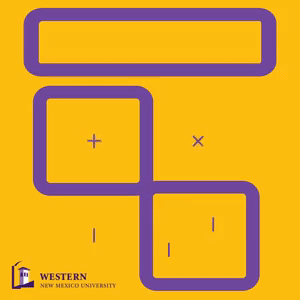Photo: HOT bronze pours from the crucible into one of the molds of 42 student-made pieces that were cast Wednesday evening at Western New Mexico University. More photos of the bronze pour can be seen at Photo Essay.
Wednesday evening at the Expressive Arts Department at Western New Mexico University, Professor Michael Metcalf and a helper, David Mulvenna, heated bronze and poured the silicon bronze into waiting molds. The pieces were created by students in the Appreciation of Sculpture and Advanced Sculpture classes, which Metcalf teaches.
The pouring began about 4:30, but preparation had been going on for weeks to prep the molds. Wednesday, they put them bottom-side up, and propped them with bricks, while the bronze heated to a molten temperature.
One student, John Johnston, has been working on a bust of his mother, Genevieve, for three semesters. It's about a 50-pound bust, he estimated. Most students create a piece during the semester they are taking a course.
Metcalf said the class had Genevieve Johnston visit the class and model for her bronze.
After the students meticulously create wax models, they must apply layers of a sand-silicon slurry over the wax models. Each of the about 12 layers must dry, and the slurry ends up as a hard and durable mold, according to John Johnston.
"The day before the bronze pour, the slurry molds are held over a fire, so the wax melts out, leaving the mold for the bronze.
"After we let the bronze cool last night, we took a hammer and knocked off the slurry mold," John Johnston said Thursday mornig.
He reported that the mold sprang a leak during the pour, which he was excited to participate in, but quick action caused the leak to stop. The leak created a protuberance out of the top of his mother' bronze head, which was accomplished in one pour. The extra bronze was broken off and remelted for a following mold.
"After hammering the slurry off, the next step is taking steel picks and wire brushes to remove every bit of the slurry, without ruining the bronze. We clean it really well. I got most of the slurry off last night, but I had to come to work today, so I still have a bit to do.
"Genevieve looks like she turned out fine," he said.
After cleaning up the bronze sculpture, artists have the option of polishing it to a fine shine, starting with a coarse sandpaper and using successively finer sandpaper to reach the amount of shine desired.
Another less-time consuming option is to put a patina of color on the bronze.
The final step it to mount the bronze onto a platform of wood or a choice of rock, such as marble or granite. At that point, the piece is ready for show.
A little while before the bronze was poured, a check of the temperature showed it was at 1946.5 degrees Fahrenheit. The flames burned green, which Metcalf explained are "the hottest and loudest flames I can get."
"During the day, you can't see the green flames," he said.
He said the top of the crucible holding the bronze gets smaller and the bronze shrinks by 4 percent during the heating process.
During the night, Metcalf and helpers did nine pours, getting them home about 3 a.m.
"All of them were a success," Metcalf declared.
The use of bronze in sculptures supports the copper industry, as it is made of 95 percent copper.
"The ancient Greeks and sculptors up until World War II used a copper-tin alloy for bronze," Metcalf said. "Brass is a copper-zinc alloy. When we started welding pieces, we discovered that a copper-silicon alloy is a superior bronze product. We, as artists, want our pieces perfect, and the copper-silicon bronze shows no welding marks, if we require putting several pieces together to form a large bronze. After the final patina goes on, you can see no changes in it where it was welded."
Metcalf recently stepped down as chairman of the Expressive Arts Department, which is now headed by Anne-Marie Elder.
"We have lots to offer," Metcalf said. "Our robust art department includes classes in ceramics, painting, print-making, photography, drawing, fiber arts, graphic design and interdisciplinary courses combining art and digital technology."
Visit www.wnmu.edu for a full course catalog of university academic offerings.









